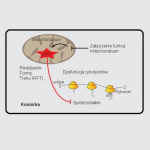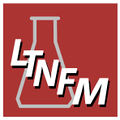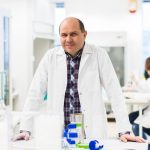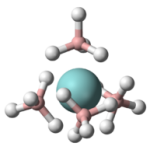Cap recognition and maintaining the active conformation of Dcp2 decapping complex
The enzyme Dcp2 alongside with its activator (Dcp1) and set of coactivators (Edc1 and Edc2) create a complex, that recognizes and removes the 5′ eucaryotic cap from mRNA transcripts. Cap removal is a critical step of many cellular RNA decay pathways, hence its functioning is highly desired to be known and well-described. In their article, […]
>>
Article of P. Dabrowski-Tumanski and J. Sulkowska recommended by F1000
We are pleased to announce that the article of P. Dabrowski-Tumanski and J. Sulkowska, entitled Topological knots and links in proteins, has been recommended in F1000Prime as being of special significance in its field. To read the article, please follow the link below: http://www.pnas.org/content/114/13/3415
>>
New mechanism of protein synthesis regulation
A team of researchers led by Agnieszka Chacińska, in cooperation with scientists from the University of Freiburg, Germany, have discovered a new mechanism of protein synthesis regulation. It turns out that defective mitochondria release reactive oxygen species in order to slow down cellular protein synthesis, which allows the cell to recover faster and return to […]
>>
A new type of nanotubes
Team of scientists led by Wojciech Grochala, in cooperation with scientists from Slovenia and United States, have recently discovered an entirely new type of nanotubes. To read more about this achievement, please see the following link. Congratulations!
>>
Important discovery in cancer treatment
Team of Polish scientists including Prof. Jacek Jemielity (CeNT UW), Prof. Edward Darżynkiewicz (CeNT UW) and Joanna Kowalska, PhD (Faculty of Physics UW) has dealt with the instability of mRNA which significantly increased it’s productivity. This particular discovery can be used in treatment e.g. in patients with inherited genetic disorders. Especially in those waiting for regeneration of damaged tissue or an autotransplantation. It creates a […]
>>
The newest discovery of Laboratory of Technology of Novel Functional Materials
Scientists from Centre of New Technologies (Laboratory of Technology of Novel Functional Materials) and from Cardinal Wyszyński University in Warsaw along with Slovenian, Belgian and American scientists, have decided to examine structural and magnetic properties of silver(II) fluoride. Thanks to the effective collaboration and commitment of every member of this international team, the project has given a lot of relevant data to clearly […]
>>
Breakthrough discovery in genetics of human thyroid cancer
A team of polish scientists – including Michał Świerniak, M.D, Anna Wójcicka, M.D. and Prof. Krystian Jażdżewski – have discovered a method for more effective diagnosis of patients with thyroid cancer at the most risk of aggressive spread of the disease. Doctors and geneticists from the Medical University of Warsaw, the Centre of New Technologies […]
>>
Journal cover for the authors from Biomolecular Machines Laboratory
The article Electrostatic Interactions in aminoglycoside-RNA Complexes, co-written by Prof. Joanna Trylska, head of the Biomolecular Machines Laboratory, and members of the Laboratory: Marta Kulik, MSc and Maciej Jasinski, MSc, was awarded the cover in the recent issue of the Biophysical Journal. Congratulations!
>>
New discovery in LTNMF team
A Team of researchers from the Centre for New Technologies (LTNMF lab) and students from the Faculty of Physics, University of Warsaw, described a new method for the synthesis of borohydride metals based on metathesis reactions, which may in the future be used to produce clean and renewable fuel. More information here.
>>
Two nature papers from 1000 genomes project consortium
A global reference for human genetic variation and An integrated map of structural variation in 2,504 human genomes were recently published with the participation of members of Functional and Structural Genomics Laboratory. The 1000 Genomes Project set out to provide a comprehensive description of common human genetic variation by applying whole-genome sequencing to a diverse […]
>>








